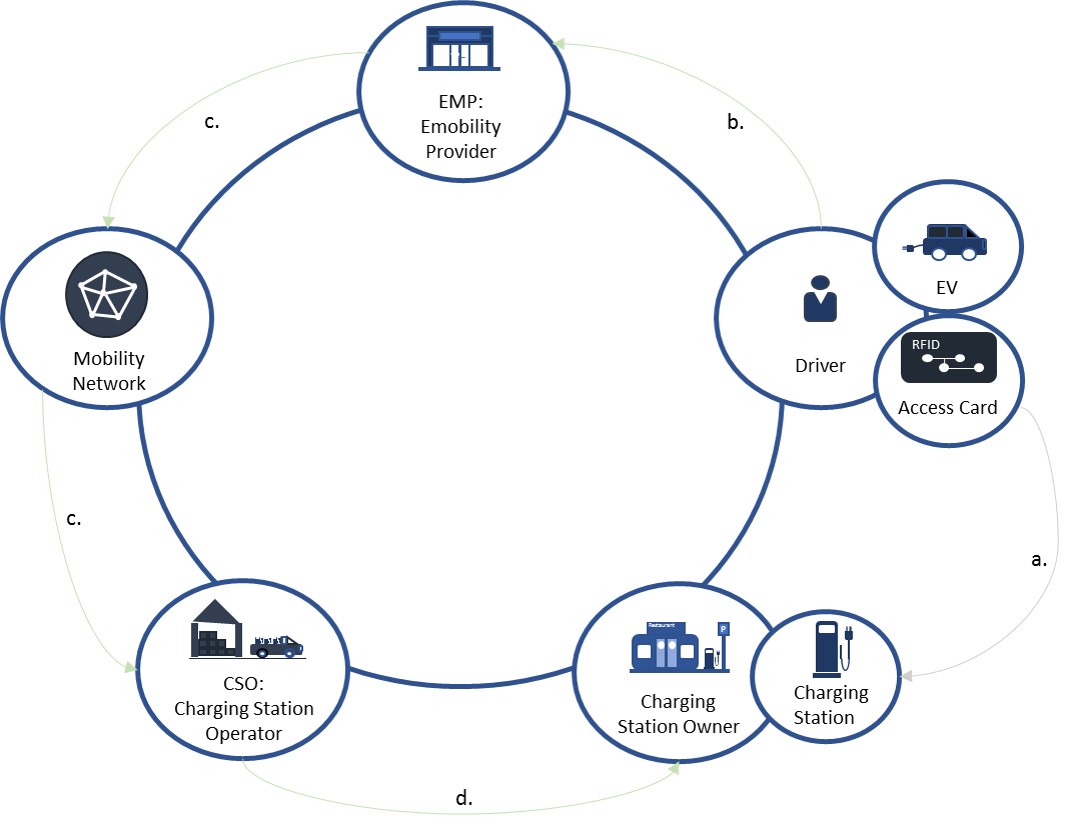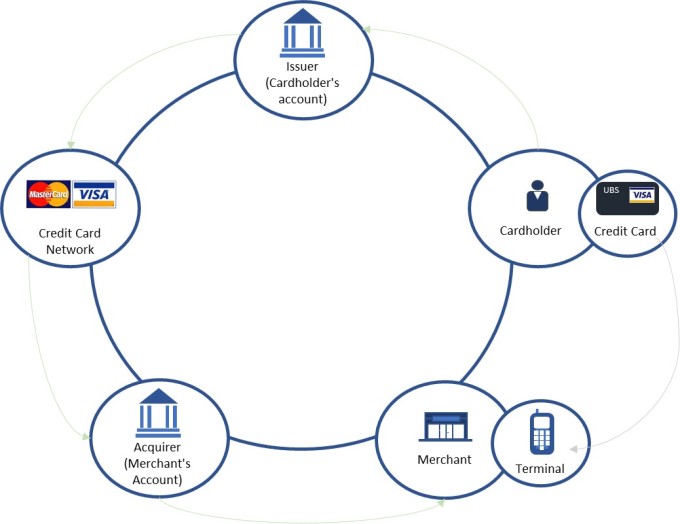With the growing number of Electric Vehicles (EV) on the road, it is important to understand the importance of public EV Charging Networks. Tesla has successfully advertised his exclusive US and European Charging Station Network. However, multiple other networks are starting to invest in this market with the expectation to get important future revenues.
Public EV networks have basically the same utility as traditional gas stations, the structure of a mobile phone network and a similar profile than financial payment cards.
First of all: Is a Public EV Charging Network really important?
This is a fair question, because, despite the gasoline cars, the electric vehicle can actually be charged at home. Moreover, with today’s electric cars reaching already 500 km and soon 800 km, “Home charging” is definitely going to be the prime source of charging. However, Public EV Networks are essential for three groups of customers:
- Urban People: Car Driver without assigned Parking lot. In some countries that could represent up to 40% of the population
- Occasional travellers: e.g. weekend & holiday trips
- Frequent travellers: e.g. Delivery Service, Sales Rep. Taxi…
What are the equipments of a Public EV Network?
A Public EV Charging Network is equipped with Smart Charging Stations connected to a central control unit called a backend to manage EV driver Charging requests. Smart Charging Stations communicate over a wireless network thanks to an M2M (Machine to Machine) card which is basically a Mobile SIM card for machines.

Drivers have to use an RFID (Radio Frequency Identification) card or Smartphone application to identify and generate the charging process. The concerned Charging Station would then remotely manage the authorization request with the connected Backend.
How does a Public Charging Network work?
With the geographical complexity of Europe and the future EV market attractiveness, competition becomes obvious and wished. Indeed, a single public Charging Network covering every business roles from the Charging Station to the EV driver cannot be sustainable. It should be open and connected!
We can distinguish three main roles for public EV Network:
1. Charging Station Operator (CSO)
CSO do manage EV Charging Networks. It means that they manage Charging Stations which belongs to multiple owners. For example Restaurant, Public Parking, Shopping Mall…
Example: Utilities (e-on, Vattenfall, Groupe E, Alpiq,, EDF…) EV-point (Belgium), Smatric (Austria)…
2. E-Mobility Provider (EMP)
EMP do offer Charging Station Network access to EV Driver. This is a Service Provider for Retail customers with subscription or “Pay as you go” type of offers.
Example: OEM (VW, Renault, BMW…), Plugsurfing (Germany), The New Motion (Holland), Blue Corner (Belgium)…
3. Mobility Network
The E-Mobility Network have the role to link the EMP with the CSO. This is the so cold “Network” or “E-Roaming platform”.
Example: International Roaming Platforms (Gireve, Hubject, e-clearing.net…), Move (Switzerland), Ladenetz (Germany)…
It has to be noticed that some important Market players do currently manage every role (EMP, CSO, Mobility Network). Companies such as “The New Motion” in Holland or Charge point in USA.
Payment transfer: Who is paying for the charging?
These market actors (CSO, EMP, Mobility Provider) are linked together to manage the financial clearing (payment process) of Driver charging transactions.
Payment Process
a. EV Driver charge at a Public Charging Station (e.g. Restaurant Parking)
b. EV Driver pays for the charging to the EMP
c. EMP pays for the EV Driver charging to the CSO via the E-Mobility Network
d. CSO do compensate for the EV Driver Charging to the Charging Station Owner (Restaurant Charging Station)
Comparison with the Credit Card Market
We can compare this structure to the Payment Card Business Model. For example, a Public Charging Station can directly be compared to a Bank ATM compatible with different payment cards (Visa, American Express, Master Card…). The EMP is the Issuer, the Credit Card Network is the E-mobility Network and the CSO is the Acquirer. This payment card model, like the E-Mobility one, do supports different competitors.

Business Model: Who is offering what?
E-Mobility Provider (EMP)
EMP do provide Charging services for EV drivers. They offer the following type of services:
- EV Charging Network access: Yearly Subscription fees or “pay as you” type of offers
- Charging transactions: Price pro kWh or minutes
EMP offers can be compared with what we can find with mobile phone network provider with subscriptions and usage price models.
Charging Station Operator (CSO)
CSO do provide services for Charging Station Owner. They offer the following type of services:
- Charging Station Sales and Installations
- Charging Station Service Management
- Access fees to the Public Charging Network
- Billing Services (Compensation for EV Driver charge processes)
Mobility Network
The Mobility Network Business Case is very similar than the Payment card (credit card) Business Model as mentioned in the example above. Mobility Network makes money with the generated Charging transactions on their network. However, as this market is not yet mature, different other models are currently applied.
- Licence price per EV driver
- Fix setup cost per Charging
I want to buy a Charging Station and be part of this market. What should I do?
The best way to add a Charging Station to a Public EV network is to contact a Charging Station Operator (CSO). They are going to offer you the best options to connect your Charging Station to multiple Mobility Networks. So that you can be reachable from the biggest amount of EMP’s, basically from Drivers.
What are the Success triggers of a public EV Charging Network?
The main success of a public EV Charging Network will simply be measured with the amount of Charging transactions. In other words, more EV drivers charging equals more transactions! Let say, that any Public Network is linked with the success of electric vehicles.
Efficiency, quality and Charging Stations infrastructure compatibility is mandatory to ensure the maximum of EV drivers stopping by. More the Public EV Network is open for multiple EMP’s, with the connection to multiple Networks (E.g. Roaming Platform), more charging transactions are likely to happen! Of course, great locations are key to ensure that EV Drivers have something interesting to do while their cars are charging. Last but not least, pricing concepts have to be smart and affordable to ensure continuous success.
Market roles are set, charging stations and EV cars numbers are growing. Everything is progressing to become a mass-market product in the years to come!

Dear Richard, thanks for your post. One comment: When you write about “EV Charging Network” I guess you mean the eRoaming Hubs, right? This is in my view more a central “Hub” approach to interconnected CPOs and EMPs but NOT a “Network” approach. Please have a look to our EU project NeMo about “Hyper-Network for electro Mobility Services. We develop and demonstrate a decentralized approach to interconnect CPOs, EMPs, DSOs and many other actors in the domain for eMobility. More details here: http://nemo-emobility.eu/
Dear Volker,
Thanks for your comment and for having read my post. I am indeed talking about the eRoaming Hubs. However, as I haven’t found an official description about this term, I have called it “Mobility Network”. That’s the name we have used until now for this Hub function. I am working for. I am comfortable to change it however. Since you represent an official instance, perhaps you can officialise this word and add it in the Nemo Glossary. What do you think?
Thanks as well for the link to Nemo. I have heard about your project from my Roaming Partners. It is very interesting, especially the European Inter-Roaming protocol. I am looking forward to hear more about it.
Richard,
eRoaming-Hubs or eRoaming-Platforms requires always one additional actor in the network to exchange information in a “network”. Nowadays technologies and “democracy” solutions do not require a central Hub or Platform. A Hub or Platform is another IT solution which could be a potential for security attacks by hackers. In addition it creates additional costs to the end-user when using eRoaming services and has to comply to the “Data-Protection-Regulation” for data being stored and exchanged within the Hub. Therefore in NeMo we develop and demonstrate a decentralized solution where the “network” has NO central platform. This will enable secure data exchange between the IT systems inter-connected.
Let me know if you need any more info. I’m happy to share and discuss it with you.
Hi Volker,
Yes, thanks, this open Nemo approach do makes sense and I hope that it is getting in this direction. However, the benefit to have some eRoaming hubs is to save important investments in configuration to exchange datas between multiple backends. Even with a standard protocols, some minor adjustments will always happen. Anyway, decentralisation is the right model and I am going to write you to get more information about it.
It all start with an independent open protocol between parties and hubs. This is crucial for an open market. It will reduce cost en support quality of service to EV drivers. This protocol should work with both peer to peer as well as to hubs and between hubs. The market itself is very capable to decide if a hub has additional values or not. That is the interesting thing here. This is not something what should be regulated – although hubs like other organisations must comply to data protection regulations. I see benefits and value for both peer to peer connections as well as the use of hubs. For both there are pros and cons. The Open Charge Point Information (OCPI) protocol is such a protocol which already exist and is used more and more. It can connect to Hubject, e-Clearing and Gireve and is used for peer to peer connections. That is the way forward. See also https://www.youtube.com/watch?v=JmeLlGYuk_g
Michael, as you are the project manager for OCPI I fully understand your comment 😉 .
Are you supporting the IEC NWP of eRoaming protocol? An IEC NWP for open protocol between charge point and backend management systems have been accepted. So I think the EV industry needs to agreed on one IEC protocol for eRoaming, as there are so many eRoaming protocols.
There is definitely still room for business partners to differential, not on the protocol and closed systems but rather then on business- value for the end-customer. For eRoaming hubs I think they need to re-think their business model and look and different values they can provide. In my view there are definitely many possibilities in the ecosystem for eMobility.
Hi Michel,
Thanks for your comment and for the youtube link. Indeed, I see as well the openness to use peer to peer connections as well as the use of hubs. What we have to bear in mind, is that we are talking mainly about commercial roles. Most of the CSOs or EMPs are (at least in Switzerland) generally small Utility companies who mostly wants to stay independent without having to invest in important backend and billing systems. The role of the “Hubs” or what I call “Mobility Network” is to create a link between these small providers. The OICP protocol is a great way to setup links between major CSOs and EMPs without having to support the business models of international hubs. I still do believe that eRoaming hubs have an important value if they give access to a maximum of providers and if they are financially attractive.